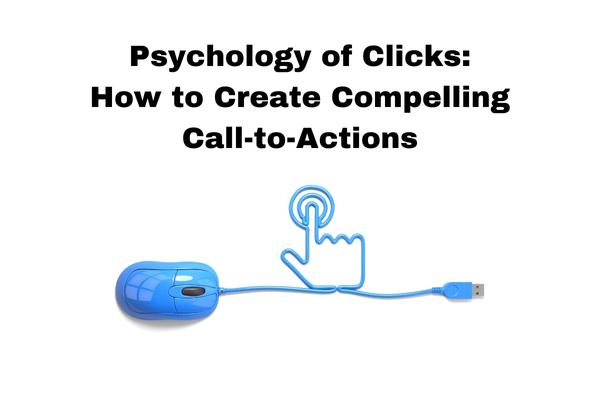
In today’s fast-paced digital age, students are seeking flexible ways to supplement their income while pursuing their studies. Blogging has emerged as a lucrative option, offering students an opportunity to turn their passions and expertise into a profitable online venture. This comprehensive guide will delve deeper into the world of blogging and provide valuable insights on how students can successfully earn money part-time through their blogs while managing their academic commitments effectively.
Choose the Perfect Niche for Your Blog:
The foundation of a successful blog lies in selecting the right niche. This involves identifying topics that align with your interests, knowledge, and expertise. While popular niches such as technology, fashion, travel, health, and lifestyle can attract a vast audience, don’t be afraid to explore unique and niche areas that have an engaged following. The key is to be authentic and passionate about the subject matter to create compelling content that resonates with your readers.

To find your ideal niche, consider the following steps:
a. Self-Reflection: Assess your hobbies, skills, and interests. Think about what you enjoy talking and writing about the most. This introspective process will help you identify potential blog niches that align with your passions.
b. Market Research: Investigate the demand and competition within potential niches. Tools like Google Trends and keyword research can provide insights into what topics are popular and which ones have less saturation.
c. Audience Persona: Define your target audience and create a detailed persona. Understanding your readers’ preferences and pain points will enable you to tailor your content to their needs.
Crafting Engaging and Valuable Content:
Content is the lifeblood of any blog. To establish a loyal readership and gain traction in the digital space, focus on producing high-quality, informative, and engaging content. Address your audience’s pain points, answer frequently asked questions, and provide unique insights that set your blog apart. Consistency is crucial, so aim to establish a content schedule that allows you to publish regular posts while balancing your studies.

Here are some content creation tips:
a. Evergreen Content: Create content that remains relevant over time. Evergreen articles continue to attract readers and generate traffic long after their initial publication.
b. Storytelling: Use storytelling techniques to make your content more relatable and memorable. Personal anecdotes and experiences can captivate your audience and establish a stronger connection.
c. Visual Appeal: Incorporate relevant images, infographics, and videos to enhance the visual appeal of your blog posts. Visual content can increase engagement and improve the overall reading experience.
d. Guest Posts: Consider inviting guest bloggers or collaborating with other content creators in your niche. Guest posts can bring fresh perspectives and introduce your blog to new audiences.
Unlocking the Power of SEO:
Search Engine Optimization (SEO) is a fundamental aspect of driving organic traffic to your blog. Conduct keyword research to identify relevant terms and phrases related to your niche. Incorporate these keywords strategically within your content, meta tags, headings, and image descriptions. Additionally, optimize your blog’s loading speed, ensure mobile responsiveness, and focus on user experience to improve search engine rankings.

Effective SEO strategies include:
a. Keyword Research: Use keyword research tools to find relevant keywords and phrases with a balance of search volume and competition. Incorporate these keywords naturally into your blog posts.
b. On-Page SEO: Pay attention to on-page elements such as title tags, meta descriptions, and heading tags. Optimize them with relevant keywords and compelling descriptions.
c. Link Building: Build high-quality backlinks to your blog through guest posting, collaborations, and outreach to authoritative websites in your niche.
d. Site Structure: Ensure your blog has a clear and user-friendly site structure. Use categories, tags, and internal linking to help both readers and search engines navigate your content effectively.
Building a Strong Social Media Presence:
To expand the reach of your blog and attract a wider audience, leverage the power of social media platforms. Create profiles on major platforms like Facebook, Twitter, Instagram, LinkedIn, and Pinterest, based on the nature of your content and target audience. Share your blog posts, engage with your followers, participate in relevant discussions, and foster a sense of community around your blog.

Social media strategies for bloggers:
a. Content Repurposing: Adapt your blog content for different social media platforms. For example, create visually appealing graphics for Instagram or Twitter threads to present your blog content in a fresh format.
b. Consistent Posting: Develop a social media posting schedule to maintain a steady presence. Consistency is essential for building an engaged audience on social platforms.
c. Engaging with Followers: Respond to comments, messages, and mentions promptly. Interact with your audience by asking questions, running polls, and initiating conversations.
d. Collaborations and Influencers: Collaborate with other bloggers or social media influencers in your niche. Partnering with influencers can help introduce your blog to a broader audience.
Once your blog starts gaining momentum, it’s time to explore various monetization methods. Consider these popular ways to earn money through blogging:
a. Affiliate Marketing: Partner with brands and businesses to promote their products or services through affiliate links. Earn a commission for each successful referral or sale made through your blog.
b. Display Advertising: Sign up with reputable ad networks like Google AdSense to display relevant ads on your blog. Earn revenue whenever visitors click on these advertisements.
c. Sponsored Content: Collaborate with brands and write sponsored posts or product reviews in exchange for payment or free products.
d. Digital Products: Create and sell digital products such as eBooks, online courses, templates, or exclusive resources tailored to your niche.
e. Membership Model: Offer premium content or access to a membership area with exclusive perks for a subscription fee.
Cultivating an Engaged Readership:
Building a loyal readership is essential for the long-term success of your blog. Foster a genuine connection with your audience by responding to comments, emails, and messages promptly. Encourage feedback, conduct surveys, and implement suggestions to continuously improve your blog’s content and offerings. Engaged readers are more likely to share your content and help grow your blog organically.
To cultivate an engaged readership:
a. Personalization: Tailor your content to address the specific interests and needs of your audience. Use their feedback to refine your content strategy.
b. Email Marketing: Build an email list and use it to share exclusive content, updates, and promotions. Email marketing allows for direct communication with your audience.
c. Community Building: Create a sense of community by encouraging discussions and interactions among your readers. Consider hosting webinars or Q&A sessions.
d. Analyzing Data: Monitor your blog’s performance using analytics tools. Analyzing data can help you understand which content performs best and what drives engagement.
Blogging offers students a viable opportunity to earn money part-time while pursuing their passions and interests. By choosing a niche that resonates with you, consistently delivering valuable content, optimizing for SEO, leveraging social media, and exploring various monetization strategies, you can turn your blog into a profitable venture. Remember, success in blogging requires dedication, perseverance, and a genuine desire to connect with your audience.




